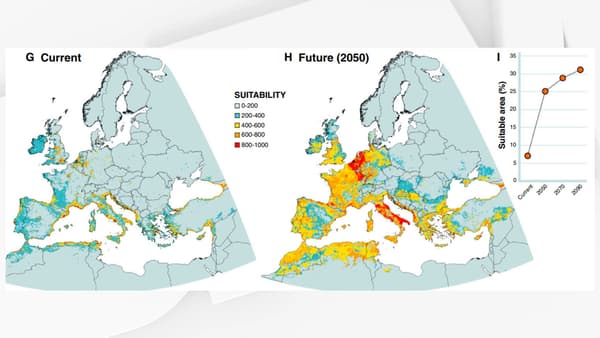The black rat, the water hyacinth, the tiger mosquito… many exotic species are considered invasive and have serious consequences for biodiversity. One of them, the Solenopsis invicta, sometimes called fire ant, has arrived in Europe, indicates a study published this Monday in the journal Current biology.
Native to South America, this ant species is on the list of invasive alien species of concern for the European Union. These red insects, which measure between two and six millimeters long, attack vertebrates and invertebrates and their bites can be very painful for humans.
“A catastrophe on a planet-wide scale”
Although small, the fire ant causes “a catastrophe on the scale of the entire planet,” the deputy director of the Institute of Ecology and Environment of the CNRS, Philippe Grandcolas, warned TF1 in early September. “It is a species that literally drives away vertebrates in the environments where it is found, making these environments almost inaccessible, even for humans.”
“They are known to have one of the most irritating poisons in the world,” we can also read in an article in the National Geographic.
“Deadly to small animals such as birds, the fire ant sting is initially not lethal to humans, but some medical reports indicate several deaths caused by anaphylactic shock after a sting. “Solenopsis invicta”explains the medium.
How many cities on the Old Continent will be affected in 2050?
Fire ant colonies can be made up of thousands of insects, study co-author Mattia Menchetti told Italian television. He and his colleagues explain that 88 fire ant nests have already been identified in the province of Syracuse, Sicily.
The cause of its arrival on the Italian island is unclear, and maritime transport is likely to blame.
Mattia Menchetti calls for action now to eliminate the insect, because according to the study’s models, under current climatic conditions, scientists estimate that the fire ant would have the capacity to establish itself in approximately 7% of European territory.
“Half of Europe’s urban areas are already adapted and global warming will favor the expansion of this invasive ant,” they write.

If the species comes from South America, it has already spread to North America, Asia and Oceania. In the United States, “authorities currently spend more than 6 billion dollars (5.6 billion euros) a year to control the population of these insects,” explain our colleagues from Western France.
Source: BFM TV


